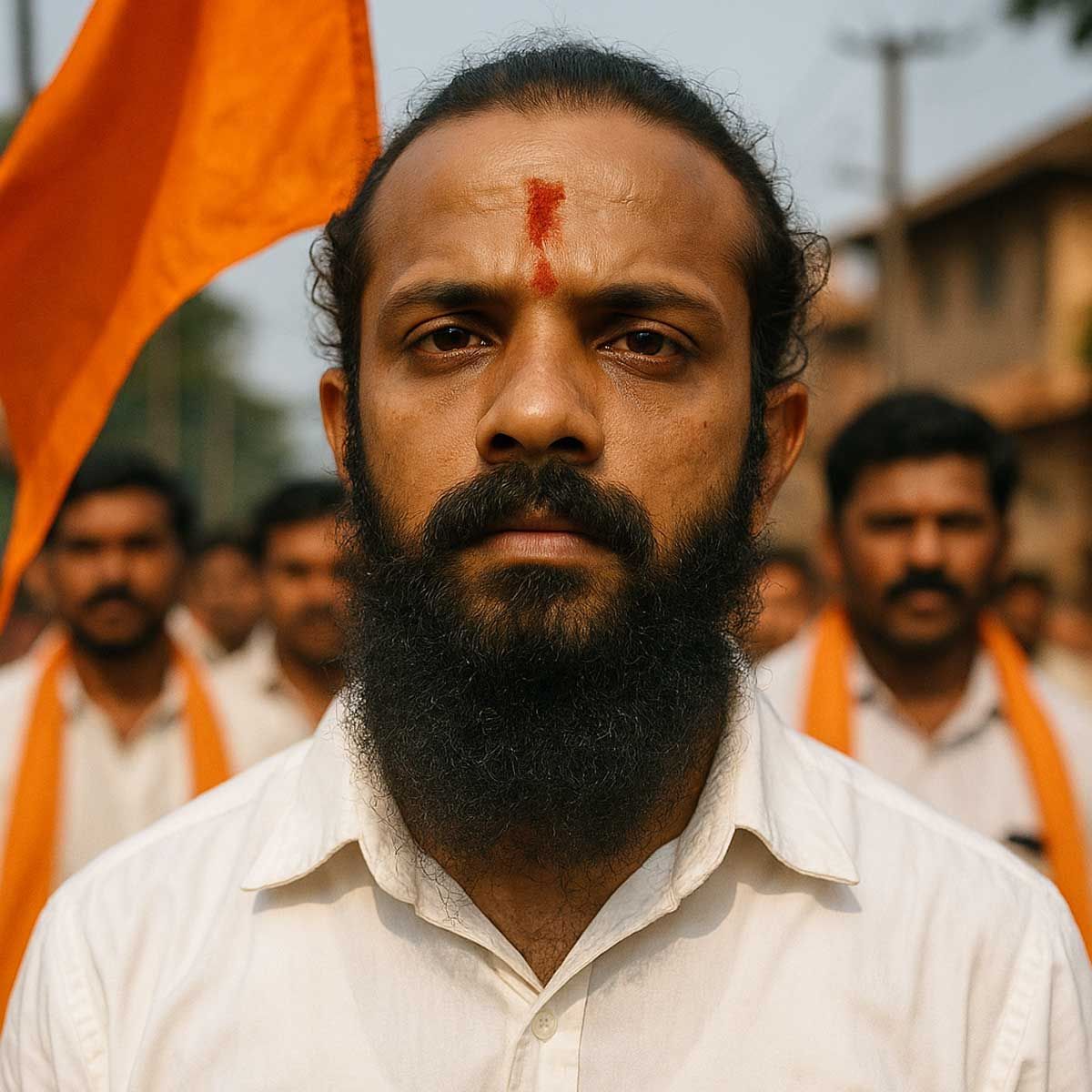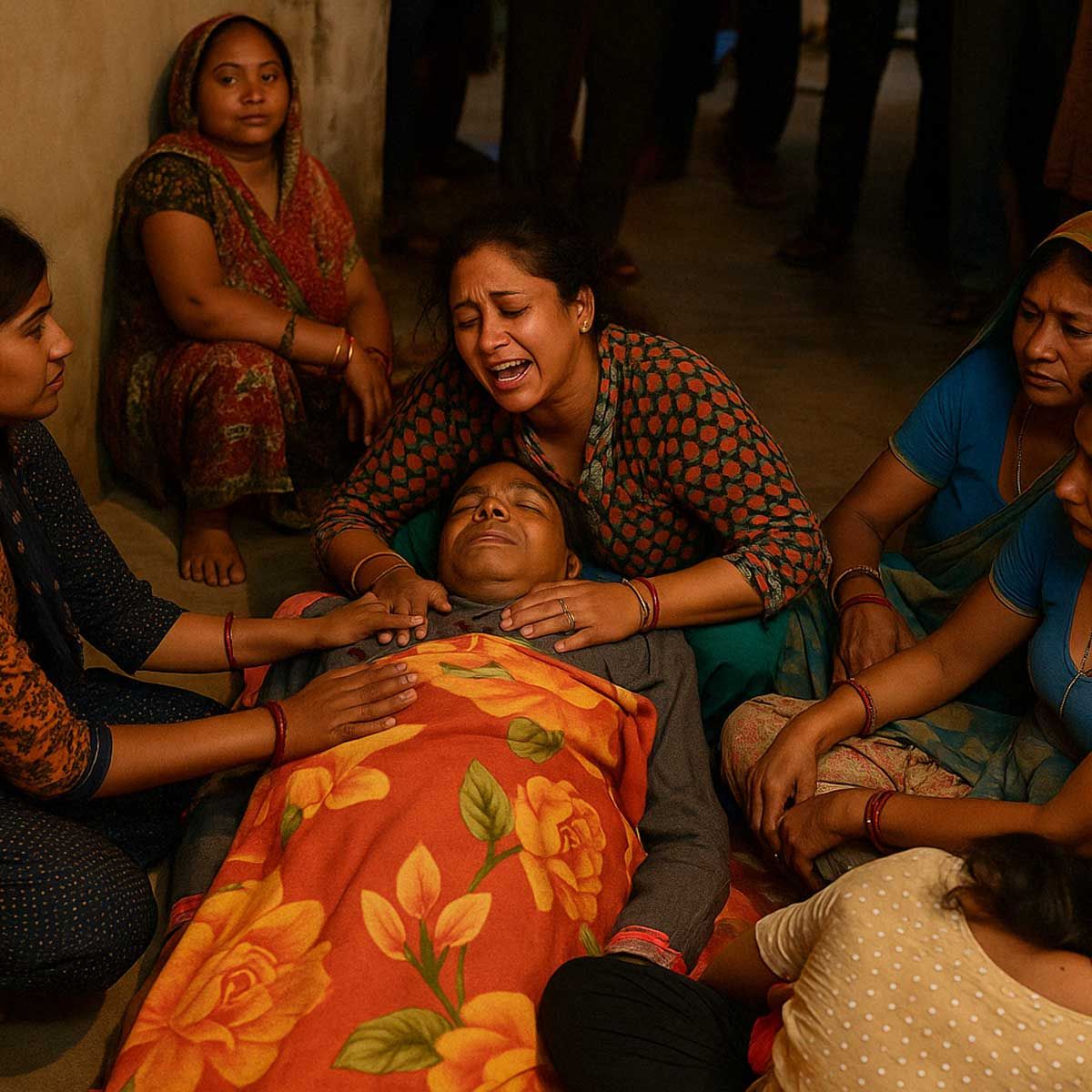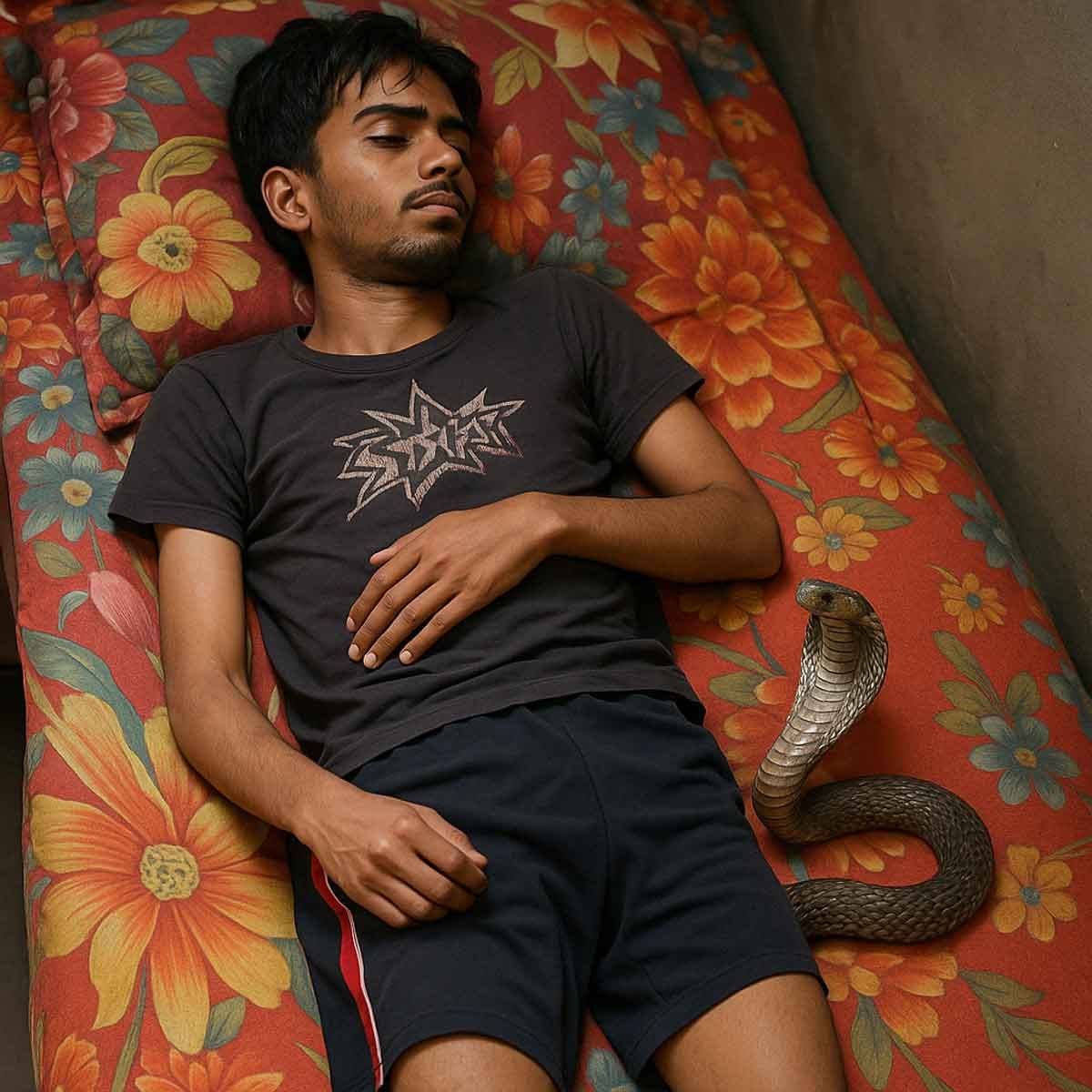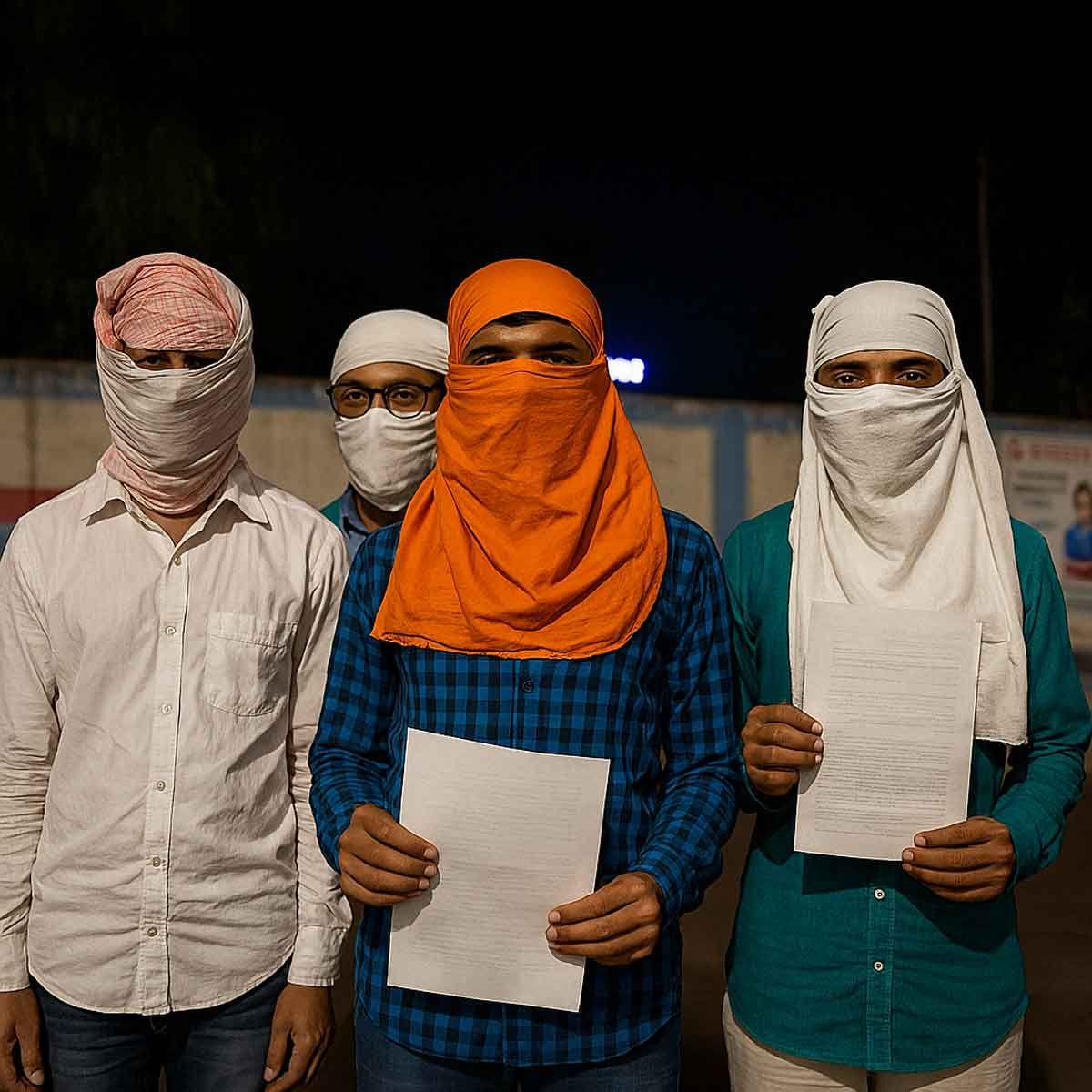More Coverage
Twitter Coverage
Satyaagrah
Written on
Satyaagrah
Written on
Satyaagrah
Written on
Satyaagrah
Written on
Satyaagrah
Written on
JOIN SATYAAGRAH SOCIAL MEDIA
"Revise, reveal, heal": NCERT renames Babri Masjid to '3-domed structure' at Shri Ram’s birthplace, reflecting its 1528 construction with Hindu symbols, and references the Supreme Court's verdict recognizing the site’s historical and cultural significance
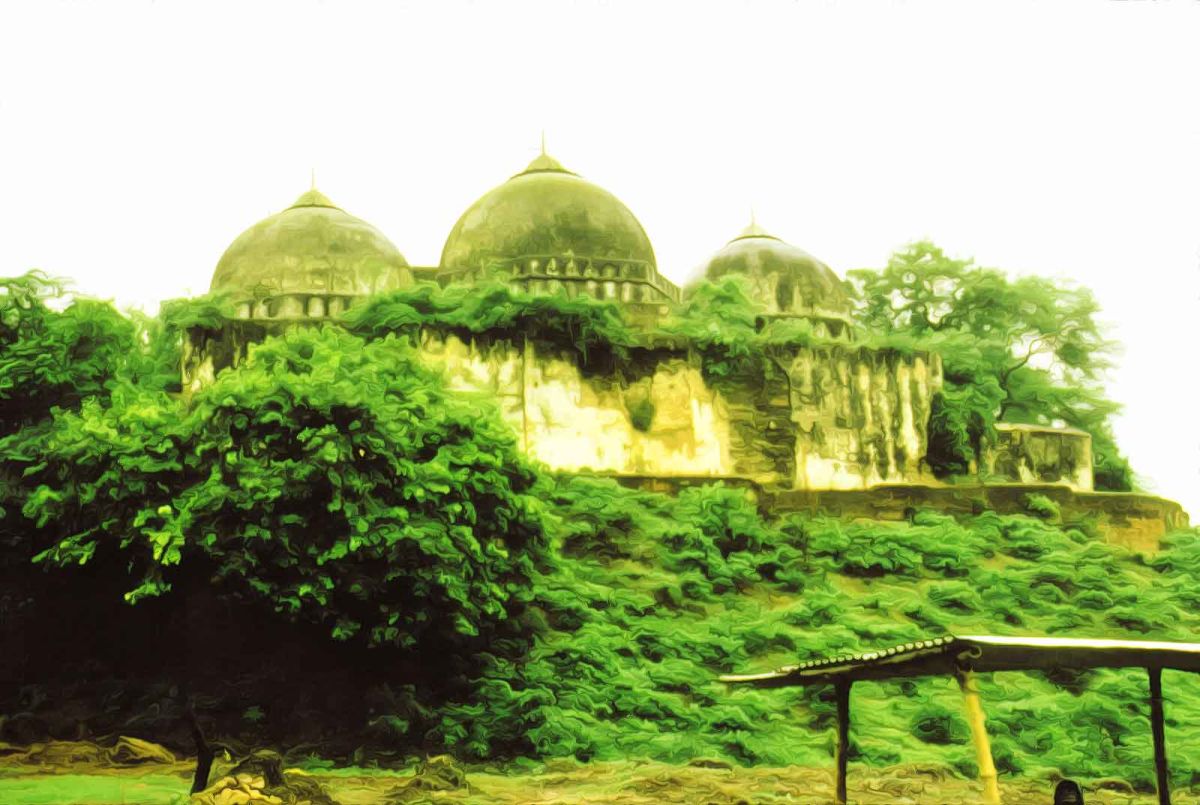
In a significant development, the National Council of Educational Research and Training (NCERT) has decided to remove the reference to the ‘Babri Masjid’ from its Class 12 Political Science textbook, as reported by The Indian Express. This change marks a notable shift in the way historical events are presented in educational materials.
|
The disputed structure, originally constructed by a general of the Mughal emperor Babur atop an existing Ram temple, has now been renamed the ‘three-domed structure.’ This alteration aims to rectify the previous naming and address the historical contention surrounding the site.
Previously, the textbook described the site as a “16th century mosque built by Mughal emperor Babur’s General Mir Baqi.” This description has now been updated to reflect the recent changes and provide a more neutral perspective on the structure's history.
The decision by NCERT to rename the structure is seen as a move to align educational content with historical corrections and sensitivities. The term ‘three-domed structure’ is intended to be a more accurate and neutral descriptor, avoiding the controversies associated with the previous name.
This update in the textbook is part of a broader effort by NCERT to ensure that the content in educational materials is factual, unbiased, and sensitive to historical disputes. By referring to the structure as the ‘three-domed structure,’ NCERT aims to present a balanced view that acknowledges the historical complexities without taking sides.
Furthermore, this change reflects ongoing discussions and debates in Indian society about how historical events and sites should be represented in educational content. The renaming is not just a simple correction but part of a larger narrative of how history is taught and perceived in schools across the country.
The NCERT's decision has sparked various reactions, with some viewing it as a positive step towards historical accuracy, while others see it as an attempt to rewrite history. Regardless, this change highlights the importance of careful consideration in the portrayal of historical events in educational materials.
|
|
Correction and Addition of Historical Context
The National Council of Educational Research and Training (NCERT) has made a significant update to its Class 12 Political Science textbook. This update involves a revision of how the historical structure at Ayodhya is described. The previous mention has been replaced with a more detailed description: "a three-dome structure (that) was built at the site of Shri Ram’s birthplace in 1528, but the structure had visible displays of Hindu symbols and relics in its interior as well as its exterior portions." This new wording aims to provide students with a clearer understanding of the structure's architectural features and the cultural elements it encompasses.
Additionally, the textbook now explicitly states that "the disputed structure was constructed at the site of [a] Hindu temple." This clarification intends to provide historical context about the origins of the site and the nature of the disputes surrounding it.
Further enriching the historical narrative, the textbook discusses a significant legal development: "In 1986, the situation regarding the three-dome structure took a significant turn when the Faizabad (now Ayodhya) district court ruled to unlock the structure, allowing people to worship there. The dispute had been going on for many decades as it was believed that the three-dome structure was built at Shri Ram’s birthplace after demolition of a temple," it reads. This entry highlights the long-standing controversy and the legal milestone in 1986 that altered the course of the dispute, providing students with a comprehensive view of the historical, cultural, and legal dimensions of the issue.
|
The NCERT book now discusses the Supreme Court's decisive 5-0 verdict, which facilitated the reconstruction of the Ram Mandir at the birthplace of Shri Ram, accompanied by the Pran Prathistha ceremony. This section provides educational insights into a significant legal resolution in India.
The text elaborates, "The verdict allotted the disputed site to the Shri Ram Janmabhoomi Teertha Kshetra Trust for the construction of the Ram temple and directed the concerned government to allot an appropriate site for the construction of a Mosque to the Sunni Central Waqf Board. In this way, democracy gives room for conflict resolution in a plural society like ours, upholding the inclusive spirit of the Constitution. This issue was resolved following the due process of law based on evidence such as archaeological excavations and historical records. The Supreme Court’s decision was celebrated by the society at large. It is a classic example of consensus building on a sensitive issue that shows the maturity of democratic ethos which are civilizationally ingrained in India," illustrating the legal and cultural implications of this verdict.
Additionally, the textbooks highlight that they have been revised for the fourth time since 2017, aiming to reduce the syllabus burden and address disruptions in learning caused by the Covid-19 pandemic. This update signifies NCERT's ongoing efforts to adapt educational content to current events and societal needs, ensuring that students receive relevant and accurate information.
|
|
Response of NCERT to Textbook Revisions
In a recent conversation with PTI, NCERT director Dinesh Prasad Saklani shared insights on the rationale behind revising the Class 12 textbook, particularly in how historical conflicts are presented. "Why should we teach students about riots?" he questioned, articulating a fundamental concern about the educational impact of such content. Saklani highlighted that the objective of education should be to foster constructive, not destructive, mindsets: "The purpose of the textbook was not to create violent, depressed citizens.”
Saklani further emphasized the educational philosophy guiding textbook content, stating, "Hatred, violence are not the subjects of teaching in school... (They) shouldn’t be focus of textbooks," reinforcing the idea that education should promote understanding and peace rather than conflict and division. He also noted that adaptability is crucial in educational materials: "If anything becomes irrelevant, it will have to be changed." This approach underscores the dynamic nature of educational content, which must evolve to remain relevant and beneficial to students.
Additionally, NCERT clarified earlier in April this year the ongoing updates to textbooks: "Content is updated as per latest development in politics. Text on Ayodhya issue has been thoroughly revised because of the latest changes brought by the Supreme Court’s Constitutional bench verdict and its widespread welcoming reception.” This statement reflects NCERT's commitment to providing students with current and contextually relevant information, ensuring that education not only keeps pace with but also comprehensively explains contemporary developments.
These revisions are part of a broader strategy to ensure that the educational materials provided to students help in building a more informed, thoughtful, and cohesive society.
 |
 Support Us
Support Us
Satyagraha was born from the heart of our land, with an undying aim to unveil the true essence of Bharat. It seeks to illuminate the hidden tales of our valiant freedom fighters and the rich chronicles that haven't yet sung their complete melody in the mainstream.
While platforms like NDTV and 'The Wire' effortlessly garner funds under the banner of safeguarding democracy, we at Satyagraha walk a different path. Our strength and resonance come from you. In this journey to weave a stronger Bharat, every little contribution amplifies our voice. Let's come together, contribute as you can, and champion the true spirit of our nation.
 |  |  |
| ICICI Bank of Satyaagrah | Razorpay Bank of Satyaagrah | PayPal Bank of Satyaagrah - For International Payments |
If all above doesn't work, then try the LINK below:
Please share the article on other platforms
DISCLAIMER: The author is solely responsible for the views expressed in this article. The author carries the responsibility for citing and/or licensing of images utilized within the text. The website also frequently uses non-commercial images for representational purposes only in line with the article. We are not responsible for the authenticity of such images. If some images have a copyright issue, we request the person/entity to contact us at This email address is being protected from spambots. You need JavaScript enabled to view it. and we will take the necessary actions to resolve the issue.
Related Articles
- Premier educational body NCERT's textbooks used by schools across India, include a chapter by far-left ‘activist’, Anti-Hindu Delhi riots, and money laundering accused Harsh Mander: Netizens demand action
- 21-yr-old girl Bina Das shot Bengal Governor in her convocation programme at Calcutta University, got Padma Shri but died in penury
- NCPCR sought an explanation over 824 out of 1,027 Govt schools not having principal: AAP leaders, including CM Arvind Kejriwal, had targeted Gujarat schools in view of upcoming state assembly elections
- “Everything you’ve ever wanted is on the other side of fear”: Mula Gabharu, one among phenomenal patriotic women who fought with Mughals for her husband, for motherland, called the people of Assam to fight Mughals by taking Ahom sword in their hands
- "The relentless pressures of the so-called marketplace have distorted all our history and culture": 'Revolutionaries - The Other Story of How India Won Its Freedom'' by Shri Sanjeev Sanyal says History of India’s freedom struggle must be re-written
- Earlier Pakistan attempted to milk the Hijab controversy and now the USA decided to meddle into India’s internal affairs by putting misleading information regarding the ongoing Hijab row in the country
- Santi Ghosh and Suniti Choudhury: Two Teenage Freedom Fighters Assassinated British Magistrate
- "Children have never been very good at listening to their elders, but they have never failed to imitate them": 4-year-old girl “Charlie Danger” Lloyd from British Columbia, Canada announces her ‘gender transition’ with her grandmother at ‘pride’ parade
- Pt. Madan Mohan Malaviya’s independent ‘Note’ to the Industrial Commission of 1916: India’s Industrial Heritage
- Sonam Kapoor steps in to support Woke ‘activists’ over NCERT controversy, dragged the RSS too
- “Kashmir to bas jhanki hai, poora Bharat baaki hai” and “Brahman teri kabr khudegi BHU ki dharti par” anti-Hindu hate slogans surfaced on BHU campus after VC Sudhir Jain attended Iftar Party: Furious students burn VC’s effigy
- "Love Lessons": Class 9 CBSE textbook chapter on dating & relationships causes a stir, Tinder jokes about it, sparking varied reactions online; this debate shows strong opinions on whether these topics should be in school books, leading to public outrage
- When Nehru ignored warnings from Sardar Patel and Sri Aurobindo and shocked USA President: Chinese Betryal and loss of centuries old ally
- Hijab row refuses to cool down, as similar controversy has occurred in another college in Karnataka: Hindu Students turn up with saffron scarves protesting against Muslim girls wearing Hijab in classroom
- Theft on a Grand Scale - Britain stole $45 Trillion from India and lied about it. Indian money developed Britain and Other Countries
















